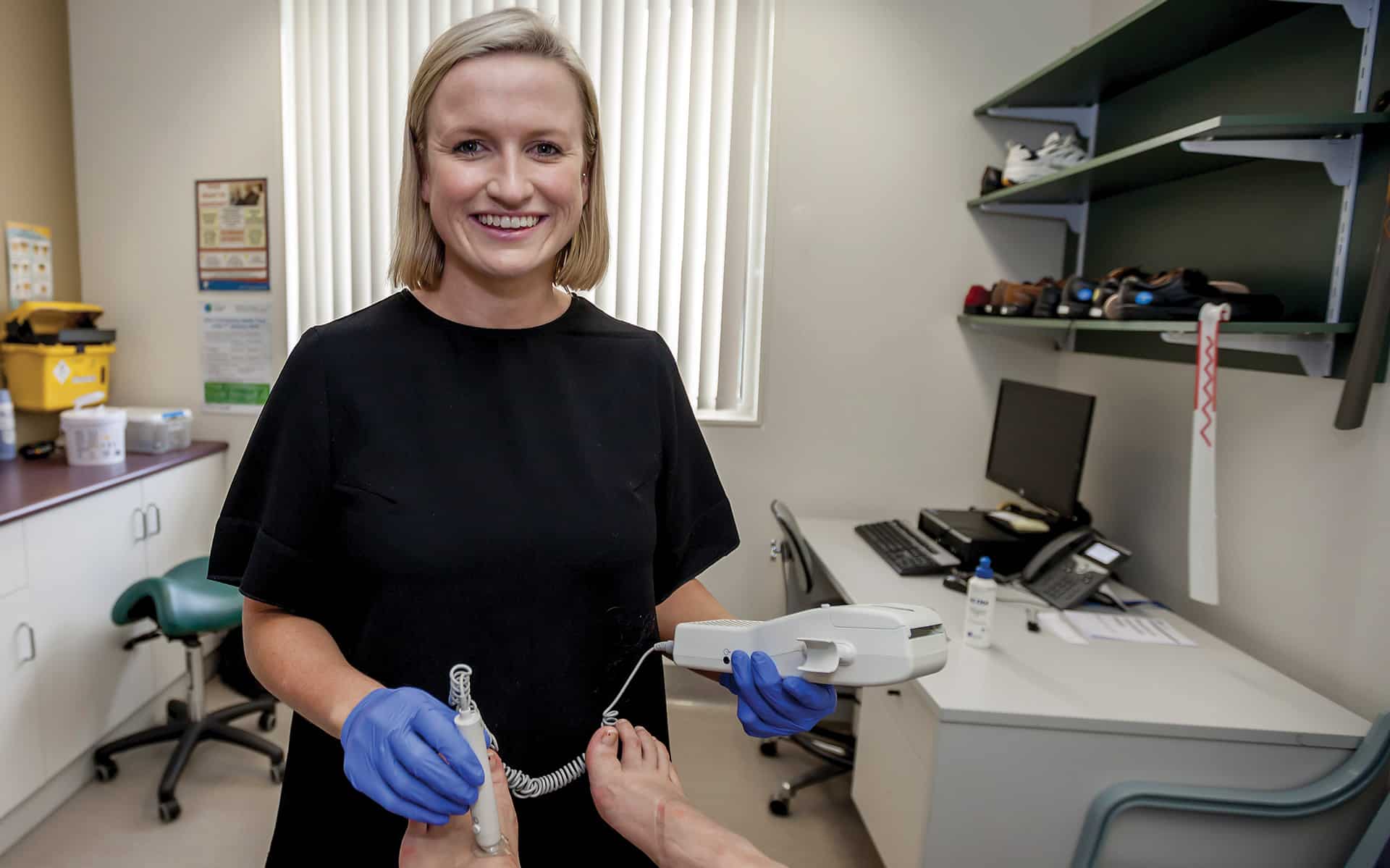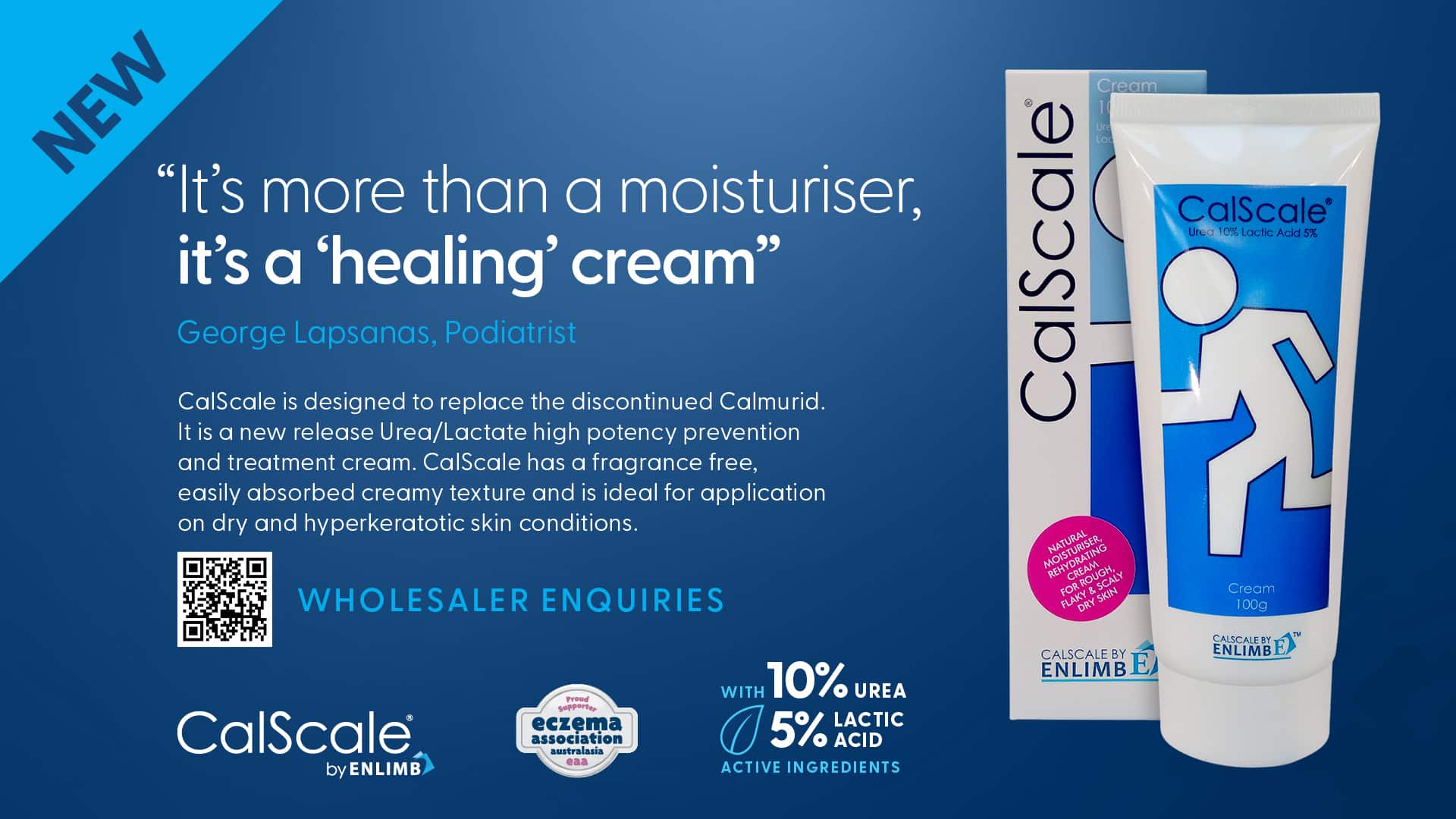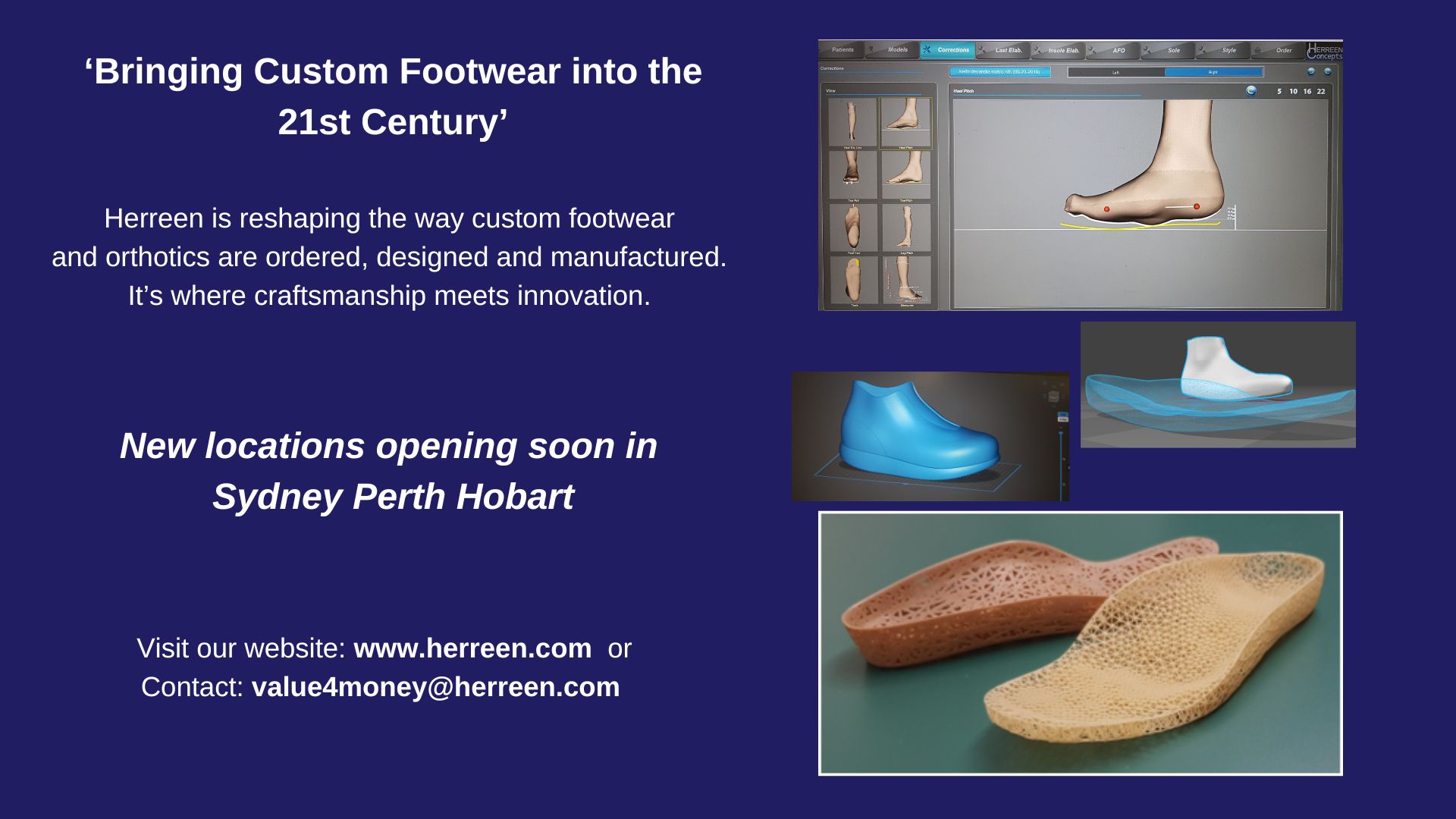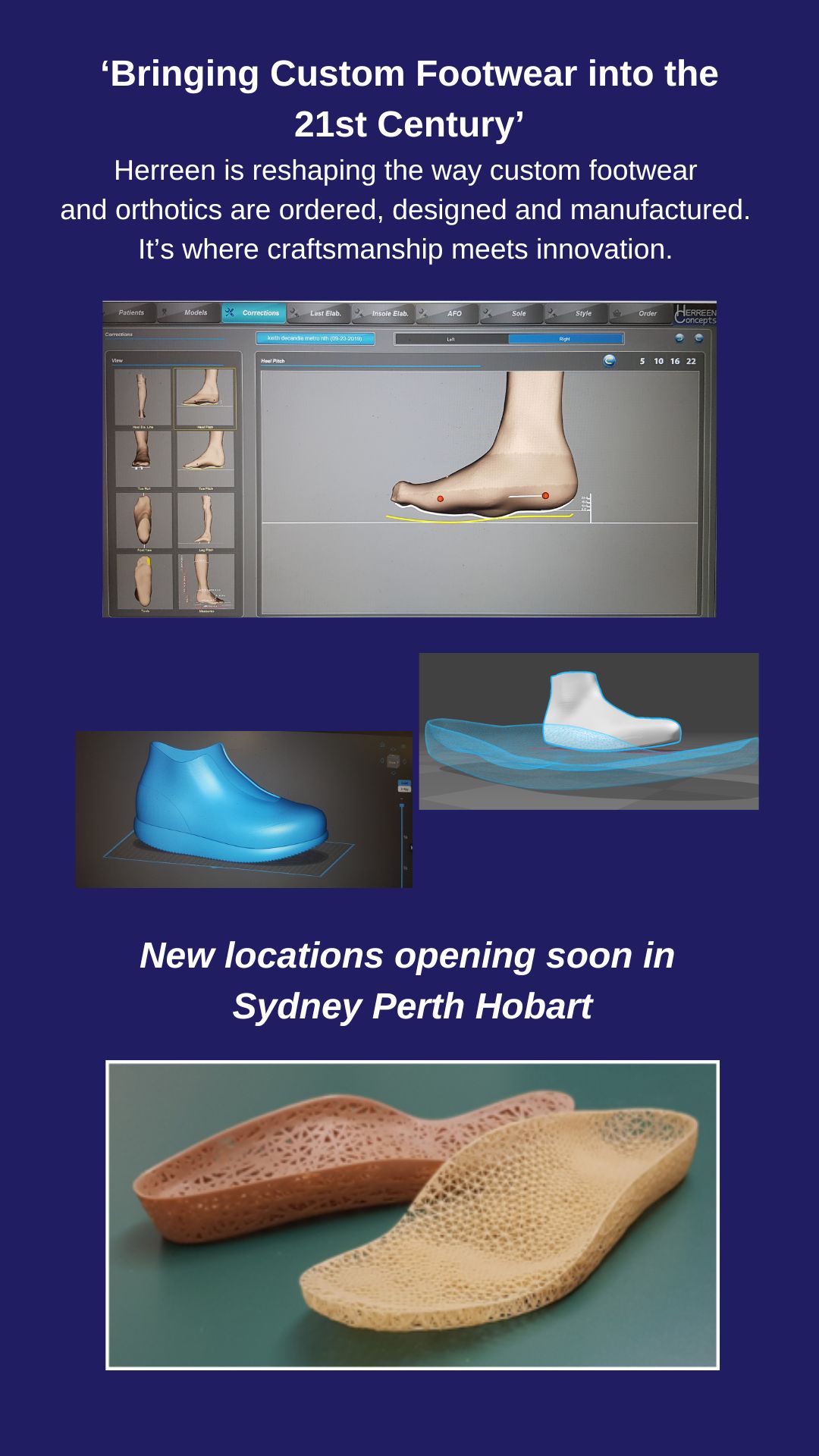
Podiatry: the difference we make
Dr Mike Frecklington, Head of Podiatry, Auckland University of Technology explains why he loves podiatry so much – and why it is one of the greatest roles in allied healthcare.
Like many health care professions, podiatry faces challenges relating to workforce retention and attrition. This, combined with the declining enrolments into podiatry programs globally, is an alarming concern with significant short and long-term implications for workforce pipeline and sustainability. The resulting unmet need for podiatry services reduces access to those that need us most, and places further strain on our current workforce. This problem is complex, multifaceted and requires a collective approach to finding solutions.
One of the key factors in this, is the lack of awareness of the work that we do as podiatrists, amongst prospective students and users of our services. Part of the solution is how we frame the promotion of podiatry as a career, as well as reinforcing the value of podiatry and the impact our work has on the people and communities we serve. Celebrating the diversity of podiatry can also help to combat issues with workforce retention and attrition.
Podiatrists are our greatest marketing tool
Many students who come through podiatry programs don’t enrol because of marketing campaigns, open days and glossy pamphlets. They choose to study podiatry because they have been inspired by their interactions with you as their podiatrist. Narratives we commonly encounter range from the pair of orthotics that allowed them to continue playing the sport they love, the surgical treatment of a painful ingrown toenail that failed to respond to multiple courses of antibiotics, the removal of a grandparent’s painful corn that brought instant relief, through to the podiatrist that helped to save a family member’s limb and life through the assessment and management of their diabetic foot complications. Every contact we have with our patients emphasises the amazing work that we do, and actively promotes the profession and difference we make to lives of the people we treat.
When you do encounter people in your clinical practice that express an interest in podiatry, it can be difficult to know what to say, or where to direct people, so reach out to your local university or the Australian Podiatry Association (APodA) for assistance with marketing materials, tips and strategies. Sharing the reasons that you chose to pursue a career in podiatry, the paths it has taken you on, and which changes in clinical practice you have seen over time is incredibly powerful. Whilst the creation of marketing collateral for podiatry courses largely rests with universities, you as a podiatrist are in fact our greatest marketing tool.
Finding the right fit
In my role I’m often asked the questions such as “what makes a good podiatrist?”, “who is a good fit for podiatry?”, “what skills lend themselves to podiatry?”. There often isn’t a simple answer to these questions because there is such a wide range of things that we do, many of which people are not aware of. Illustrating this is important as people may not be aware how well their interests, skills and goals align with a career in podiatry. For example, entry-criteria into health degrees tend to place an emphasis on the sciences, however, it’s worth considering other skills and strengths that are essential to becoming a successful podiatrist.
Communication is a core capability for clinical practice. Podiatrists work with people across the lifespan, so being able connect with people and build relationships is one of the most important parts of what we do.
Podiatry is an excellent career choice for those that enjoy working with others to help them achieve their goals. For people that are practical learners and enjoy being ‘hands-on’, highlighting the translation of these skills to the extensive range of clinical assessments and treatment modalities we use to identify and manage lower limb problems. Highlighting that some podiatrists are business owners that run innovative multi-disciplinary clinics, may appeal to that person with an enterprising or entrepreneurial mindset. In situations where you are talking to people that are interested in podiatry, showcasing the full scope of practice and career opportunities is a great way for people to see if podiatry is good fit for them.
Diversity of career pathways
Having diversity in career options is not only an attraction for entering a profession, but also a way of enhancing retention. For us as podiatrists, we can work across a range of different settings be it private practice, public health, education, research, leadership, mentoring or alongside industry partners.
We can choose to work across the scope of podiatry whereas others may specialise in a focused area of practice. Having the ability to tailor your career to your needs and lifestyle is a real strength of our profession. It’s important to not forget that our qualifications and skill set are also recognised internationally.
From my own perspective, using podiatry as a vehicle to travel has provided me with some of the most exciting and enriching clinical and cultural experiences. If you do find yourself at a career crossroad, it is important to embrace these moments and use them as an opportunity to reflect on your journey as podiatrist, the skills you have gained and mastered along the way. As clinical practice continues to evolve, there is always more to learn and new opportunities to seek out.
The current workforce challenges that our profession faces require a proactive and collective effort to reframe the perception of podiatry and to emphasise the profound impact we have on people and community. Using authentic narratives from clinical practice and showcasing the alignment of skills to the diverse career options can help to create a pathway towards a sustainable and thriving future.
AD
A proud STRIDE advertiser

Want to see a podiatrist?
Spoiler alert: with no referral required, it is simple to see a podiatrist. Simply find a podiatrist who is a member of the Australian Podiatry Association and book an appointment. Have further questions? Read on.
Firstly, what does a podiatrist do?
You may already know that podiatrists are university-trained allied health professionals who assess, diagnose and manage a vast range of foot pathologies that can relate to diseases that affect the whole body, such as diabetes. For more information on the many ways podiatrists can make a difference to your health, check out this article.
When should I see a podiatrist?
While bunions and ingrown toenails are absolutely a reason to see your podiatrist, a podiatrist’s scope of practice is much bigger. Whether you have a bone or joint disorder like osteoarthritis, or soft tissue problems, diabetic foot issues, circulatory disorders, or even neuromuscular presentations – the bottom line is that if it affects your foot or lower limb – then a podiatrist is the health professional for you.
How do I see a podiatrist?
As well as jumping online to find a podiatrist who is a member of the Australian Podiatry Association, you may wish to also:
Ask your local community
Ask local friends, since word of mouth can make all the difference. You may be surprised by just how many other people have seen a podiatrist and can recommend one to you. Start asking around to learn from the experiences of others.
Leverage technology
Head to a social media platform like a local community Facebook page, check out Google reviews, or search through an online forum to find a podiatrist near you. There is a wealth of information on a range of online platforms; a quick search can make all the difference.
Where do podiatrists work?
Podiatrists practice in various settings such as private clinics, hospitals, multi-disciplinary health centres, Aboriginal Community Controlled Health Organisations, community health facilities, aged care settings, academia, research and footwear companies – to name just a few!
What next?
Start with this link (find a podiatrist) and go from there!
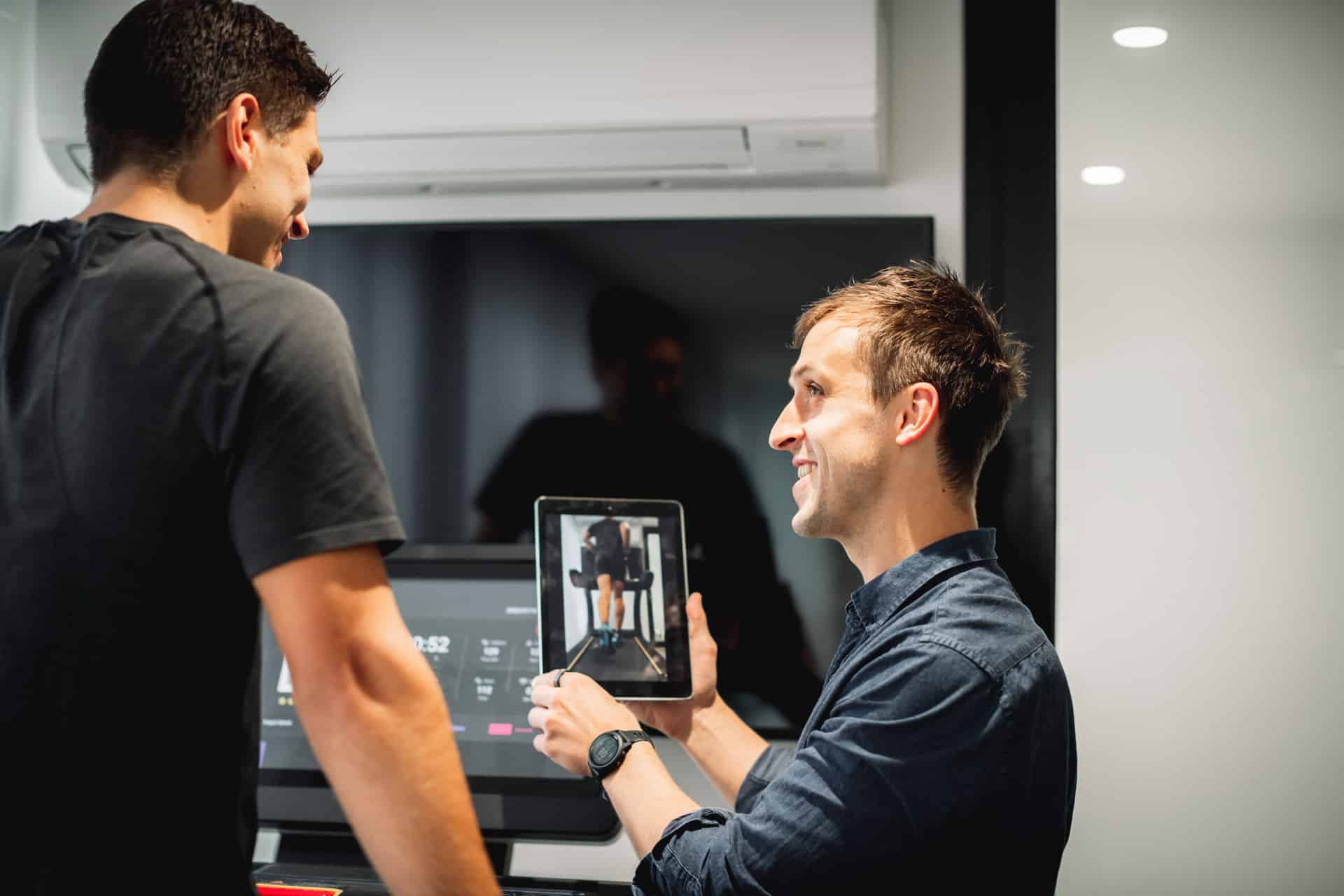
Podiatry – More than you think
Gone are the days of people thinking that podiatrists simply treat bunions or clip toenails. This health profession offers SO much more. Podiatrists can potentially help to save a life or a limb. In fact, the impact of a podiatrist on your overall health can be nothing short of staggering.
Your feet hold the key to so much more than you may realise. These overlooked extremities not only support your mobility, but they can play a role in your longevity. Did you know that your feet can even give vital clues into the overall health of your neurological and vascular systems – and a whole lot more?
The role of a podiatrist
With that in mind, what does a podiatrist do?
Podiatrists assess, diagnose and manage a vast range of foot pathologies, which often relate to diseases that can affect the whole body, such as diabetes.
Since health conditions can affect the feet (and even show up there first!), podiatrists are often the first health practitioners to identify an issue that needs addressing.
As an essential member of any health care team, podiatrists care for people with chronic disease. This includes people living with diabetes, cardiovascular disease, arthritis, and degenerative neurological conditions. A podiatrist’s work can involve advanced wound care, referral for advanced assessments, exercise prescription, manufacturing orthoses and sourcing specialist footwear.
In a nutshell, your local podiatrist is a university-trained, registered healthcare professional, and a key member of the allied health workforce.
Detecting blocked arteries
Here’s one example of how your feet can be the first part of your body to wave a red flag. Consider peripheral arterial disease (PAD), when narrowed arteries reduce blood flow to the lower limbs. When you think about it, if blood has a tough time pumping all the way down to your feet, then it may indicate a potential health issue such as PAD.
Your podiatrist can carry out tests to investigate this, which could lead you to a diagnosis and treatment – particularly since people may show no symptoms otherwise of a cardiovascular disease such as PAD, such as this patient story.
Keep on top of your foot health because this is about much more than your feet. Treat your local podiatrist much like you would any other health professional who you see yearly, or twice a year.
Limb saving intervention
A podiatrist is extensively trained in wound management, so they can not only diagnose and treat foot and leg ulcers (and other wounds), but they can provide support to help you prevent them. An ulcer left to develop can necessitate amputation. Access to a podiatrist in these circumstances can quite literally make all the difference.
Podiatrists can refer you onto high-risk foot clinics if they believe further intervention is required. Always start with your local podiatrist when it comes to diagnosing and treating wounds on your feet and lower limbs.
The details that matter
Conditions managed by podiatrists also include sports and musculoskeletal disorders, injuries, growth and development conditions, chronic disease such as arthritis, dermatological pathologies, and neurological disease.
Podiatrists manage a wide range of conditions, such as stress fractures, muscle sprains and strains, ingrown toenails, and joint conditions. They use a combination of medical, surgical, and other techniques to provide personalised care to alleviate pain, restore mobility and improve a person’s quality of life. Podiatrists can independently request radiological imaging, administer local anesthetic and perform minor surgical procedures.
Podiatrists can undertake credentialled study pathways to focus on areas such as paediatrics, or sports and biomechanics. The scope of practice is considerable and if your feet or lower limbs need attention, a podiatrist should be your first point of contact. Since your feet house a quarter of your body’s bones, along with numerous muscles, tendons, ligaments, and joints – the stakes are high.
Regardless of your reason for seeing a podiatrist, you don’t need a referral. Chances are, a member of the Australian Podiatry Association already works in your community.
Ultimately, podiatrists are responsible for the diagnosis and management of disorders, injuries and pain that affects the foot, ankle, and lower limbs. They are one of the few allied health professions who can work within advanced scope of practice, such as prescribing medicines as an Endorsed Prescriber and even performing advanced surgical procedures, such as a specialist Podiatric Surgeon.
Book in with your local podiatrist to experience first-hand why podiatrists are so much (much…) more than you may think.
Find a podiatrist near you.

Podiatry Week Q+A
With Podiatry Week 2023 upon us, here’s all you need to know to get involved.
Every bit of engagement for members, our partners and even patients adds up to make a big difference; to help better explain, promote and celebrate our profession.
What is Podiatry Week about?
Each October, APodA hosts a week dedicated to celebrating our members, highlighting the profession and educating the community on what podiatry is and the vital role it plays in Australia’s healthcare system.
The key goals for this week include:
- To raise the profile and credibility of podiatrists in Australia
- To educate the public on a wide range of services offered by podiatrists
- To attract new talent to the profession.
The theme for Podiatry Week 2023 is ‘Podiatry, more than you think’. It asks people to think again about what they know about the profession. We want this campaign to inspire people to think more broadly about the profession, educate people on the full scope of podiatry practice, and encourage those looking for a rewarding health career to consider podiatry.
When is it happening?
9 to 15 October, 2023
What happened to Foot Health Week?
Traditionally, this week has been called ‘Foot Health Week’ however, we have changed the name this year as we feel Podiatry Week better reflects the fuller scope of the profession and the role of podiatrists in the delivery of healthcare; helping us to raise the profile of podiatry across Australia.
The new name will allow us to tell more stories about the profession, its opportunities, the full scope of practice and its impact.
What initiatives are taking place?
The campaign aims to highlight the different opportunities within podiatry, whether that be private practice, working in hospitals, with footwear brands, working in remote communities, conducting surgical procedures, in rural and regional communities and across a range of health conditions and stages of life. For more information, see below.
How can I get involved?
We are calling on our network to get involved with this campaign and help spread the word about podiatry.
- Share this patient-facing article in this month’s STRIDE with your communities to help advocate for the role of podiatry, along with this article .
- Members of the Australian Podiatry Association have received a member pack with a variety of materials including social media graphics, text for your social media posts, bunting templates, posters and more!
- As part of the campaign, we have been working with the Australasian Council of Podiatry Deans (ACPD) to develop a ‘Careers Kit’, to support the recruitment of more people to join the podiatry profession. This kit is available to all and can be used in a presentation about podiatry anytime at your nearest careers expo, high school, sporting club, social venue and so forth.
- Follow our social media channels to like and share our content
Where can I find out more?
Head to our website for further information on the above initiatives.


